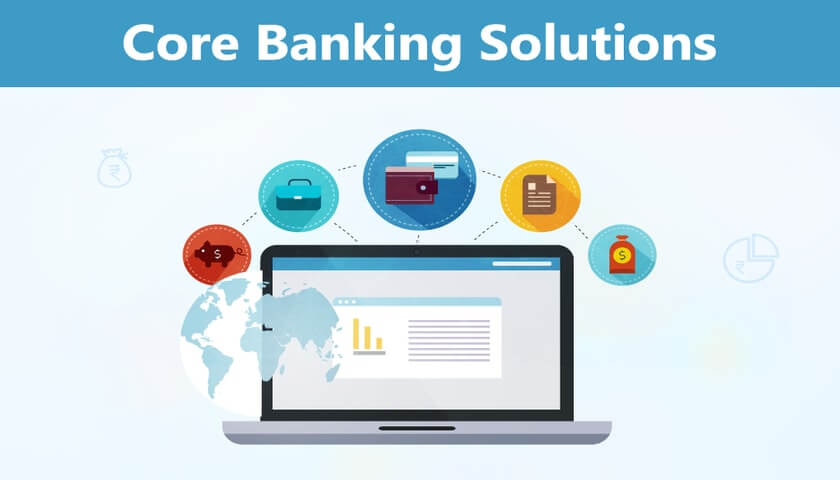When we study any economy, we find the banking sector at the forefront of spearheading financial growth. The banking sector is rightly called the pillar of any economy.
In the last decade or so, the banking sector has been evolving to serve its customers better. In this endeavour, we find many banks adopting the core banking system to make financial transactions easy and seamless.
The use of technology in banking has revolutionized banking operations leading to greater efficiency and profitability. Before we go and see how core banking implementation has impacted the profitability of the banking sector, let us understand what core banking is.
What is Digital Core Banking?
Digital core banking is a centralized banking system that allows banks to conduct processes across various branches of a bank through a centralized database.
A customer can access the whole gamut of banking and allied services from any branch. The idea is to make banking simple and efficient so that customers can operate their accounts from anywhere and at any time.
It removes the concept of localization of banking services and makes a customer a customer of the bank and not of a specific branch.
The acronym CORE in core banking can be expanded as “Centralized Online Real-time Exchange.” This acronym aptly explains the essence of core banking technology.
Impact of Core Banking Digital on Bank Profitability
Adopting technology is no longer a choice but a must for the banking sector, as the advantages are multifold. Now let’s move on to see how core banking solutions have impacted the profitability of banks.
1. Better Customer Service:
Customers, be it individuals or enterprises, are the foundation of any bank. Hence, every bank aims to provide the best service to nurture and maintain current customers and woo potential customers.
Core banking processes, like cloud core banking, make it possible to provide customers with an agile financial system. Many services like single-window service, online banking, send money, mobile banking make customer experience comfortable, fast, and secure. Satisfied and loyal customers are likely to use more services, boosting bank profitability.
2. Automation of Routine Tasks:
Basic banking operations involve a whole lot of routine and repetitive tasks that can now be automated. A core banking application can perform basic banking operations like updating balances, calculate interest rate on saving account or fixed deposit, loan servicing, and so on with efficiency and speed, saving both time and money.
Core banking reduces the operational costs as you can divert personnel to more productive tasks. Core banking allows banks to identify customer requirements and use employees to service these needs in a more personalized manner.
3. Upping Inbuilt Security:
A core banking transformation that is noteworthy is the heightened security. As each transaction is recorded and updated in real-time, the likelihood of security breaches and frauds is minimized. Also, it is possible to track lapses and correct immediately decreasing losses due to any negligence.
Core banking concepts, when implemented religiously, provide a secure and flawless way for both banks and customers to work together. Gaining access to banking records even on mobile with security and the double level of verification instills confidence in customers.
4. Prompt Decision Making:
As all customer data are available in real-time, decision making by the bank management is data-driven. Planning and executing the decisions become easy and comprehensive across all branches. Better utilization of time and resources improve profitability.
Core banking provides the agility to implement government regulations across all branches. Monitoring and making employees accountable for the execution of the decisions improve efficiency and profitability in operations.
5. Ease in Launching Financial Products:
Gone are the days when banking functions only involved collecting deposits and allowing withdrawals and servicing loans. Banks today offer these and more. For example, a customer interested in best investment plans for financial securities can easily do it with the bank that they have an account.
Banks now view themselves more as financial advisors and aim to take a 360 approach to service clients. Core banking solution providers have recognized this, and their financial software helps in launching financial products with ease. With the widening of the basket of services offered, profitability also increases hand in hand.
6. Increased Efficiency:
Core banking has helped cut costs and increase the efficiency of banking employees. Core bank online allows banking staff to access bank records of any customer from a centralized database. This facility makes it possible to serve customers quickly and more satisfactorily.
Better working methods lead to cost reduction and more profits. Performance tracking of employees is possible with core banking motivating them to do well. Core banking solutions for small banks prove to be a boon for better management.
Conclusion:
Technology is changing the way business is done today, and this is true even in the case of banking. Today, we have some of the best core banking systems, like the Finacle core banking software, available that we highly recommend for the banking sector.
Every business aims to remain profitable. Core banking software is an innovative solution for the banking sector to scale up its profitability. Operational efficiency, high-class customer service, agility in meeting changes in the financial ecosystem, and more have been possible with core banking system architecture.
Core processing systems for banks are here to stay, and we can see more innovations in the coming future. We hope this article has demonstrated how advantageous core banking is.
If you found this information interesting, please do comment and share with us your thoughts on core banking.



